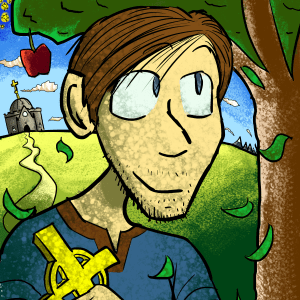Capcom’s made a lot of fighting games over the years from smash hits like Street Fighter to cult classics like Darkstalkers, but among these head-to-head brawlers Marvel vs. Capcom stands out as being particularly unique. Iconic comic book superheroes fighting popular video game characters in fast paced tag team action certainly sounds like a recipe for success, but because the rights to use all these characters are constantly in flux it’s been decades since anyone has been able to legally play these games at an affordable price. Even if the games themselves were gone the hardcore audience’s rabid enthusiasm certainly has not and it seems Marvel and Capcom are ready to answer their call, releasing all of their previous collaborations in one package. While I have played a few Marvel vs. Capcom games in the past, many of the games in this collection were completely new to me so I hope this makes for an interesting review.
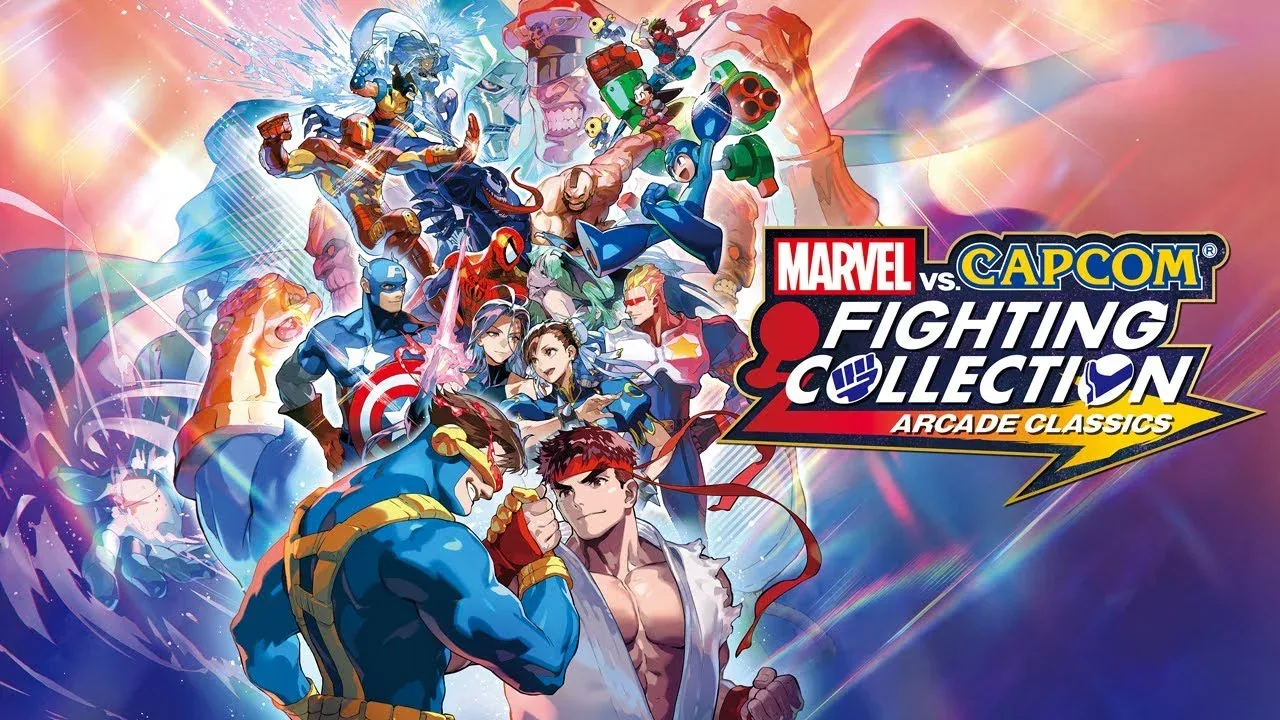
Art and Screenshots used from igdb.com
The collection itself has all the features from Capcom Fighting Collection with customizable border art and scanlines, training mode, online play, and a gallery for music, key art, promotional material, and concept art. While these features might be the bare minimum for a collection like this, it’s probably all it really needed considering the fact that everything applies to all 7 games included. I was particularly happy with the collection’s online modes as SpicyFoodHiccups and I rarely had issues while playing together. Additionally, the game allows easy access to playable bosses and secret characters who would otherwise be unplayable or require special passcodes to access. It’s certainly nice to have access to these extra characters, though they are extremely strong compared to regular characters so it might be advisable to turn them off if you want to avoid frustrating your friends.
X-Men: Children of the Atom (X: CotA)
The first of many fighting games Capcom would create with the Marvel license. X-Men: Children of the Atom follows the titular team and their adversaries as they fight to take down Magneto who is plotting to use the space station Avalon to destroy the world. It’s a pretty basic setup for a superhero fighting game story, but I will give credit to the fact that the game’s selection of playable villains are not allied with Magneto’s Brotherhood of Evil Mutants so the story still makes sense no matter who you play as.
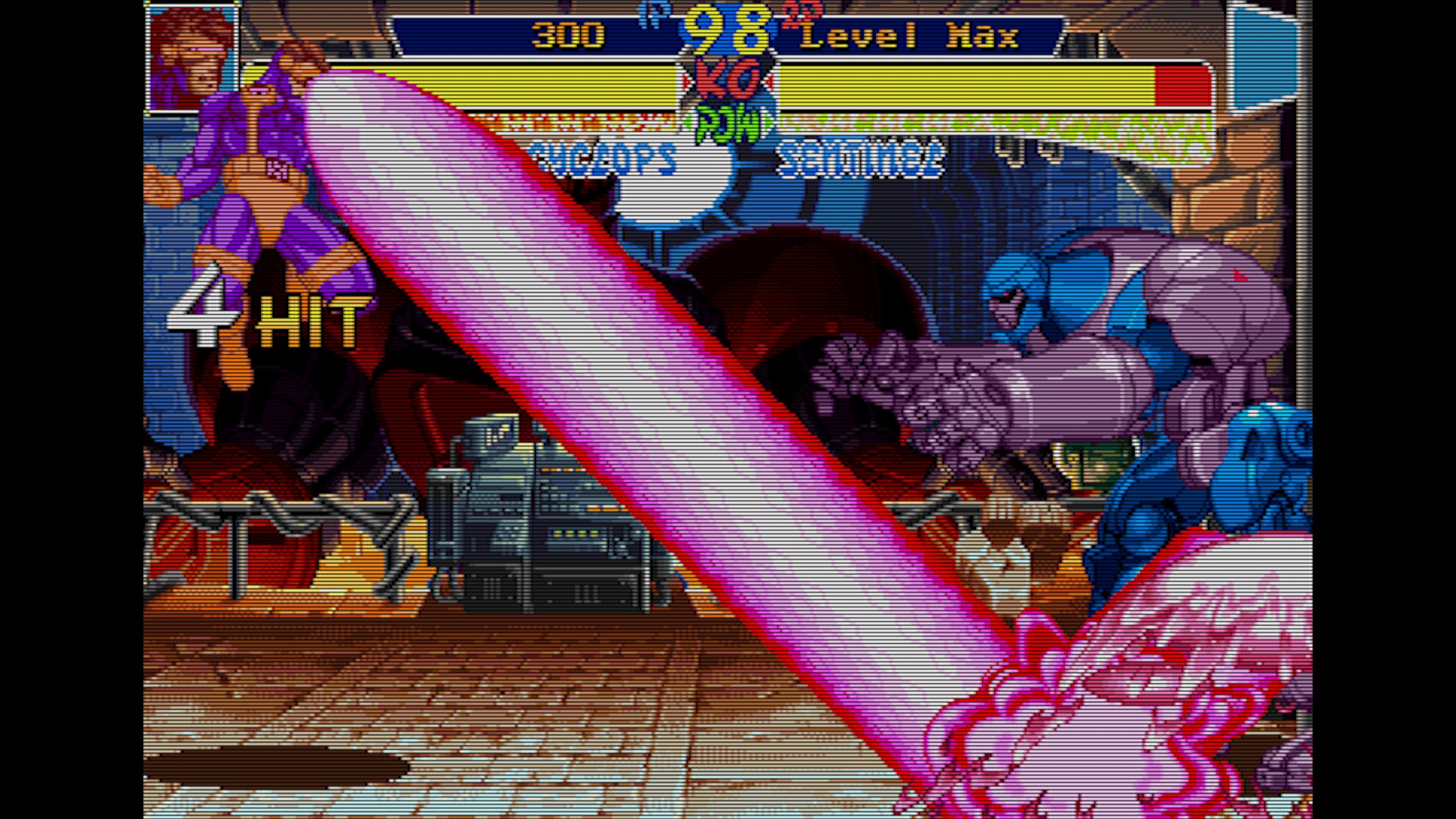
Stylish action from the very start. Dante from Devil May Cry would be proud. (Personal Screenshot)
X: CotA uses the standard Capcom 6-button control scheme with 3 punches and 3 kicks. Each of the playable characters have their own set of special moves, but they also have other less obvious properties that further define their playstyles. For example, my personal favorite characters in the game, Cyclops and Psylocke, have the “Combo Pro” attribute which allows them to easily chain normal attacks into combos the same way you would in Darkstalkers. My main issue with the game is that most characters only have 2 to 3 special moves which isn’t inherently a bad thing, but with the benefit of hindsight some characters feel incomplete without the moves they would gain in later installments. X: CotA is a decent first entry in the Marvel vs. Capcom series, but there’s definitely a lot of room for improvement.
Marvel Super Heroes (MSH)
While the X-Men is a Marvel property with characters and lore deep enough to carry a franchise separate from the rest of the Marvel brand, I’m sure Capcom were eager to be given the keys to the kingdom for the aptly titled sequel: Marvel Super Heroes. The returning X-Men characters (including the previously unplayable bosses Juggernaut and Magneto) are now joined by Marvel all-stars such as Spider-Man, Captain America, Iron Man, Hulk, and dastardly villains like… Shuma-Gorath? Blackheart? I guess every fighting game needs a few oddball picks among the household names, but needless to say this game is definitely a remnant from a different time. The story centers around the various characters trying to collect the 6 Infinity Gems in order to save the universe from Thanos, a premise most people should find familiar after its theatrical blockbuster adaptation years later.

Don’t take it personally if I pick Dr. Doom in MSH. I just really like the Fantastic Four.
The gameplay in MSH is pretty similar to X-Men: Children of the Atom, but the main addition is the Infinity Gems. The 6 Infinity Gems will appear randomly during a match for the fighters to pick up. When activated the gems provide power ups based on the color of the gem. This system is very thematic to the game’s premise, but in practice the randomized nature of the gems comes off as very gimmicky. Overall MSH is about on the same level as its predecessor and which game is better will ultimately come down to personal preference. I think I enjoy MSH slightly more than X: CotA, but it’s honestly a negligible difference compared to what comes next.
X-Men vs. Street Fighter (XvSF)
Now it’s a party! I’m sure most people in 1996 never imagined a game like X-Men vs. Street Fighter would ever be possible, but from a developer standpoint combining assets from X-Men: Children of the Atom and Street Fighter Alpha 2 into a brand new game was both a cost effective and highly profitable idea. That’s not to say there’s nothing new here as the additions of popular X-Men like Gambit, Rogue, and Sabertooth as well as the first ever appearance of Alpha-era Cammy really helps this game feel like a truly all-star roster. Unfortunately there’s not much of a story here outside of X-Men villain Apocalypse being the final boss, but it does still lead to some funny skits during the end credits so I can’t complain too much.
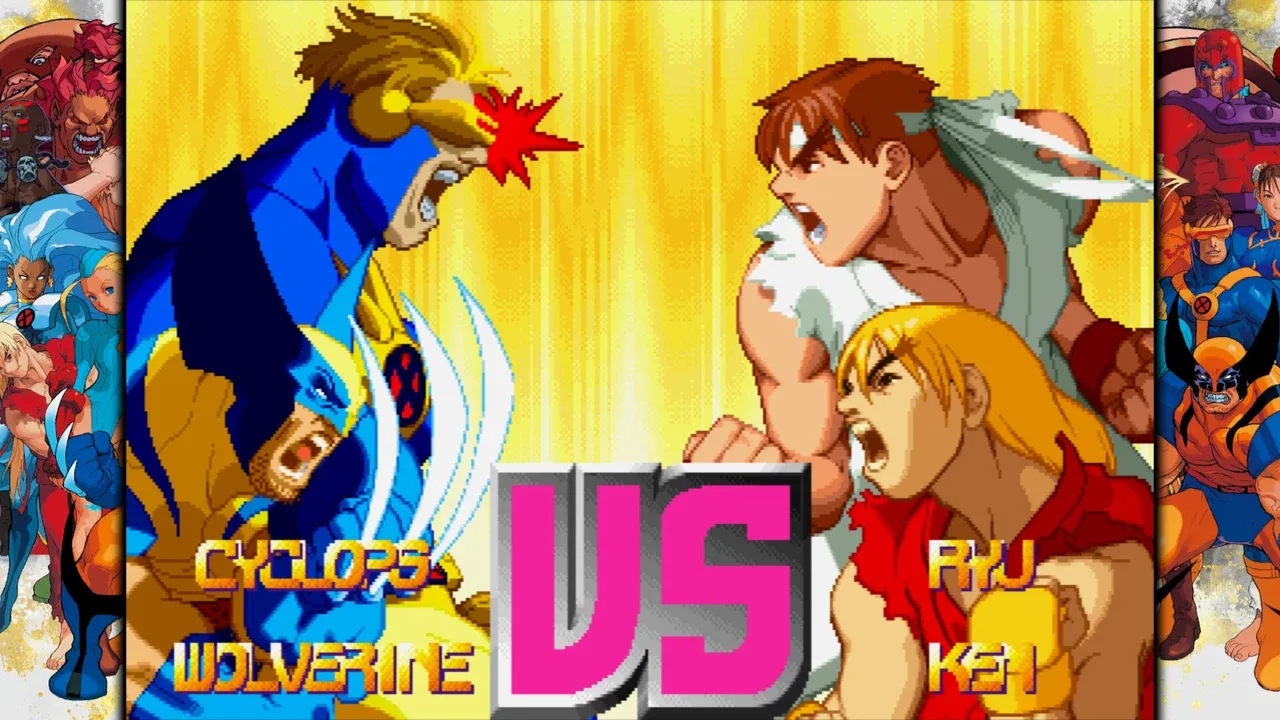
The fact that this image exists at all is crazy even today.
XvSF is also quite a big step up in terms of gameplay with a lot of character specific actions from previous games, such as the aforementioned “Combo Pro”, becoming more standardized among the cast. The biggest leap forward however, is without a doubt the new 2 versus 2 tag team system where players select 2 characters to swap between during the fight and combine their powers into devastating super attacks. All these changes add up to create a fast-paced combat system with more freedom for player creativity than a single character could provide. XvSF is easily one of the best games in this entire collection while also laying the groundwork for great games still to come.
Marvel Super Heroes vs. Street Fighter (MSHvSF)
Having cracked the crossover code on X-Men vs. Street Fighter, Capcom wasted no time capitalizing on that success with Marvel Super Heroes vs. Street Fighter, mirroring the evolution from X-Men: Children of the Atom to Marvel Super Heroes. Unfortunately MSHvSF fails to recapture the magic of its predecessors not only because 90% of its roster is recycled from other games, but because the selection of characters is just… bad. Don’t get me wrong, bringing back the likes of Shuma-Gorath, Blackheart, and Omega Red isn’t inherently a bad thing, but when heavy hitters like Iron Man and Magneto are missing the lesser names definitely start to feel like wasted potential. Street Fighter is not off the hook either as the new inclusions, Dan and Sakura, are similar enough to Ryu, Ken, and Akuma that a lack of variety is felt on the Capcom side.
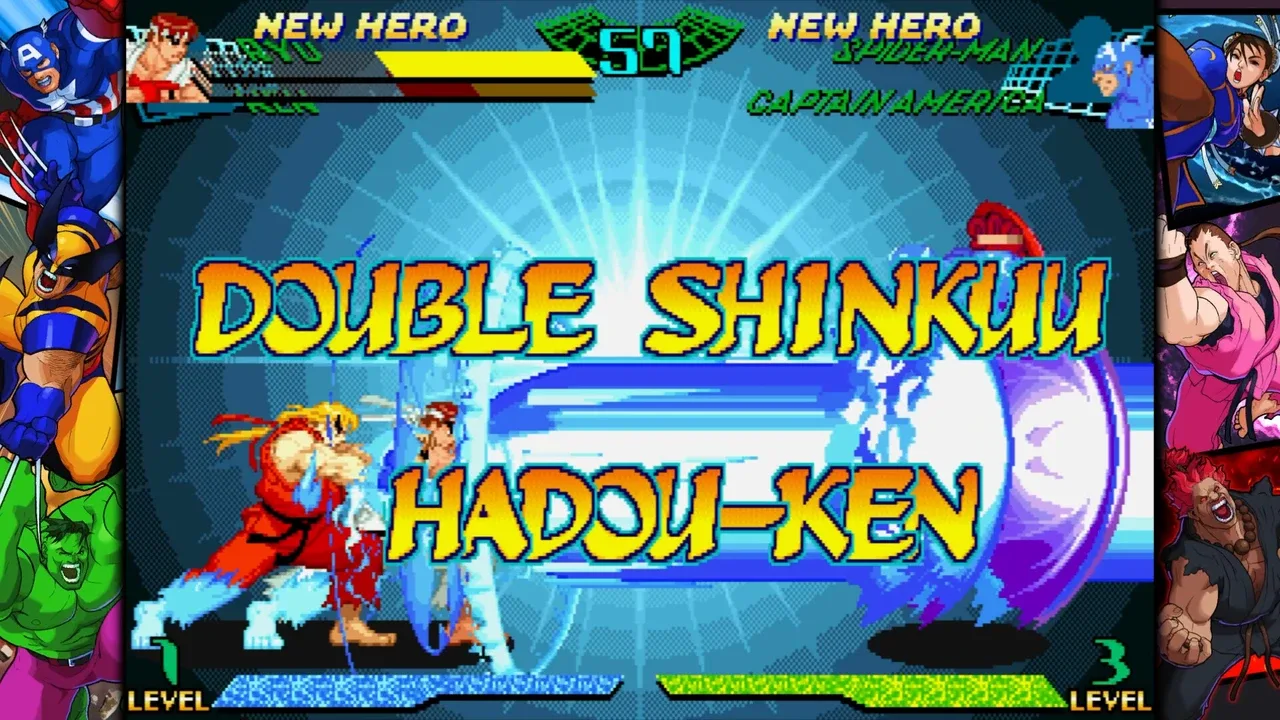
I heard you like hadoukens so I combined two big hadoukens to create the biggest hadouken you’ve ever seen.
In terms of gameplay MSHvSF is another incremental step forward for the series with the addition of assists. An assist involves calling in your tag partner to perform one of their signature moves while staying in control of your main character. This system can give characters powerful tools they don’t normally have at the push of a button, but the downside is that if the tag partner is hit by an attack they won’t block and could end up taking massive damage. MSHvSF is by all accounts a very fun game to play, but in spite of its strengths the lackluster selection of characters really holds it back from being an all time classic. Unless you’re a big fan of obscure Marvel villains and Street Fighter’s shotokan practitioners, you’ll probably find more enjoyment with other games in the collection.
Marvel vs. Capcom: Clash of Super Heroes (MvC)
After 2 games of Marvel comics crossing over with Street Fighter, it seems only logical that Capcom’s next step would be to bring in their other popular franchises and turn this all-star showdown up to 11. Ryu is now joined by the likes of Morrigan from Darkstalkers, Mega Man, and Strider. The Marvel side remains largely untouched save for the introductions of Venom and War Machine, the latter of whom is largely a pallet swap of Iron Man which is a bit disappointing, but not a deal breaker. The game’s story revolves around the heroes teaming up to fight against Onslaught, a powerful X-Men villain who serves as the game’s final boss. Certainly a step up from practically having no story at all, even if it’s still pretty basic for a fighting game.
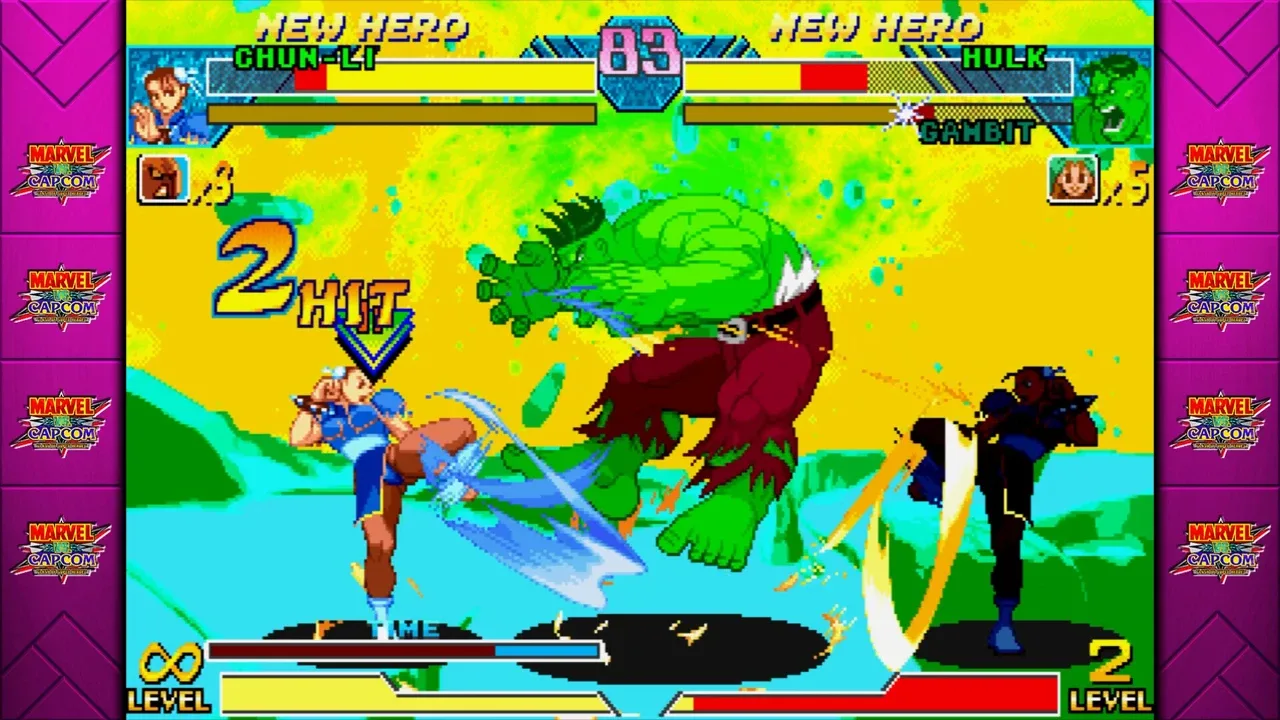
HULK STUCK IN KICK GIRL’S CROSSUP! HULK HATE CROSSUPS!
The first big change to the gameplay is the “Dual Combination” which allows players to control both of their characters at the same time for a short period of time. Dual Combination takes a lot of skill to use effectively for obvious reasons, but the potential damage output is well worth the effort. The second big change are the dedicated “Assist Characters”, non-playable guest stars randomly selected before a match(though there are secret codes to choose the assist yourself) who can be called in to do a special move during the fight. On paper this is a great change to the assist system as it greatly expands the scope of the crossover beyond the playable roster, but in practice its a bit of a kick to the crotch to see popular characters like Arthur from Ghosts ‘n Goblins and Avengers co-founder Thor reduced to glorified cameos. Marvel vs. Capcom: Clash of Super Heroes is the culmination of mechanics from every prior game in the Marvel vs. Capcom series and is rightly considered by many to be an all time classic.
Marvel vs. Capcom 2: New Age of Heroes (MvC2)
The moment you’ve all been waiting for, the game that many people will see making this collection worth owning. Marvel vs. Capcom 2: New Age of Heroes is simultaneously a celebration of Marvel vs. Capcom itself while also radically reworking the mechanics into an experience all its own. The story this time around focuses on an original character, the pirate captain Ruby Heart, as she gathers the Marvel and Capcom characters together in order to stop the return of an evil entity known as Abyss. It’s certainly an odd set up for a crossover game to focus on original characters with no ties to either Marvel or Capcom, but considering we haven’t had a storyline this involved since Marvel Super Heroes I’d still call it a massive improvement.
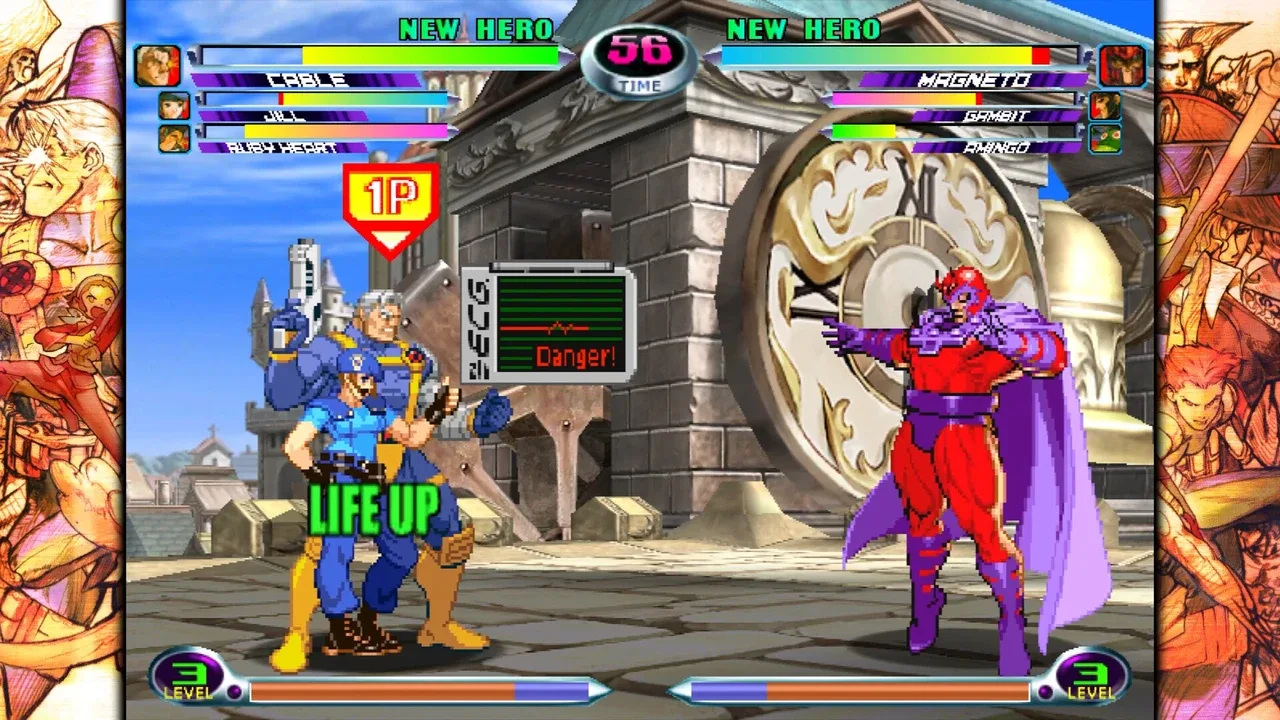
Assists can be more than just attacks. Here Jill gives Cable a herb to heal some of his missing health.
MvC2 is mechanically special for its introduction of the 3 versus 3 team format and to accommodate this Capcom’s usual 3 punches and 3 kicks has been removed in favor of 2 punches, 2 kicks, and 2 assist buttons. Don’t let the numbers fool you however, the tag team moves are insanely important and customizable so the amount of strategy and creativity has greatly increased. Combine this with every playable character returning from the previous installment plus an inspired cast of newcomers like X-Men’s Cable and Resident Evil’s Jill Valentine and you have one of the biggest, most open-ended fighting games ever created. Playing this game for the first time it quickly became my favorite game in the collection.
The Punisher
And so we end the Marvel vs. Capcom series… where it all began! Before Capcom put the X-Men in a fighting game, they got their hands dirty with Marvel’s street level anti-hero Punisher in a belt scrolling beat ‘em up. The story is a snapshot of Punisher’s never ending war on crime in a battle against The Kingpin and his criminal empire. Not the most ambitious narrative in the world, but when the game lets you step into the iconic boots of Punisher(or Nick Fury if you’re player 2) I doubt anyone is going to complain.

Nick Fury was a very different character before Samuel L. Jackson took up the mantel.
As a beat ‘em up, The Punisher has a fairly simple set of moves compared to fighting games. Basic attacks are performed with a single button alongside jumping and special moves. There are two special moves in The Punisher, one is an invincible spinning low kick that does good damage at the cost of a portion of the player’s health. The other is a grenade that does massive damage, but is a limited item the player must pick up from defeated enemies or broken crates. One of the most unique and thematic elements of The Punisher is that when enemies with guns show up, Punisher whips out a pistol and shows no mercy to those merciless mobsters. The pistol is a very powerful tool that would make the game entirely too easy if Punisher used it all the time, but the way it’s implemented turns it into a nice change of pace in between the usual fisticuffs. While The Punisher may not be what most people are coming to this collection for, it’s actually one of the best beat ‘em ups I’ve ever played and I strongly encourage you to give it a try if you get the chance.
Conclusions
Phew! That sure was a lot of games to get through. So what’s the final verdict? Well let’s not kid ourselves here. If you love fighting games you’ve probably already bought this collection. If you love any of the characters featured in these games I doubt anything bad I have to say would dissuade you from checking it out. For the rest of you who don’t fall into either category allow me to give one fair word of warning: these games are broken beyond belief! To clarify, these games aren’t broken in the sense that they are plagued by bugs and glitches that make them unplayable(most of those have been patched out), but they are broken in the sense that they are woefully unbalanced.
One of the benefits of modern fighting games is that they do a good job of making sure even the weakest character actually has a fighting chance against the strongest character. In Marvel vs. Capcom however, the distance between the best and worst characters is so vast that it affects casual and competitive players alike. Don’t get me wrong, a person who’s never played MvC2 isn’t going to be able to defeat a pro-player with decades of experience simply by picking Magneto, Storm, and Sentinel, but a mid-level player in the exact same situation definitely could win if the pro-player isn’t using an equally powerful team.
Needless to say if you’re going into these games with the expectation of becoming the very best like no one ever was, you’re gonna have a bad time. My final recommendation for anyone on the fence about Marvel vs. Capcom Fighting Collection: Arcade Classics is to approach it with a casual spirit. Play it to have fun with your friends first and foremost because that’s what fighting games are for at the end of the day.
Scoring: 83%
X-Men: Children of the Atom: 3/5
Marvel Super Heroes: 3/5
X-Men vs. Street Fighter: 5/5
Marvel Super Heroes vs. Street Fighter: 3/5
Marvel vs. Capcom: Clash of Super Heroes: 5/5
Marvel vs. Capcom 2: New Age of Heroes: 5/5
The Punisher: 5/5
Morality/Parental Warnings
Violence: Marvel vs. Capcom is a series of fighting games where heroes and villains use martial arts, weapons, and super powers to combat one another. There are instances of blood in The Punisher, but besides that these games generally lack gore.
Sex: Many characters throughout the Marvel vs. Capcom series, both male and female, wear form fitting and/or revealing costumes. The character Rogue has a special move that allows her to kiss her opponent in order to copy one of their special abilities. The character Morrigan is a succubus who is very sexually provocative in the ways she moves and fights.
Occult/Magic: Many characters in the series wield supernatural powers which could be interpreted as magic, but they lack proper rituals or incantations. Shuma-Gorath is a lovecraftian styled elder god. Blackheart is a demon whose father Mephisto is essentially Marvel’s version of Satan. Dhalsim’s powers are stated to be a function of yoga. Anakaris is a reanimated Egyptian mummy. Dr. Doom is a master of both science and sorcery, but it is unclear which of his in-game abilities come from the former or the latter.
Drugs: In The Punisher the Kingpin runs a drug manufacturer as part of his criminal empire which Punisher disrupts.
